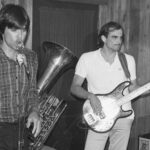Jeff Healey, the prodigious blues-rock guitarist known for his fiery playing and unique lap-style technique, might be famously quoted saying, “I’m not a gear man – never have been.” However, a closer look reveals a musician with distinct preferences, particularly when it came to his guitars. Surprisingly, for a player of his caliber, Healey’s axe of choice for a significant portion of his career was not a high-end custom shop instrument, but rather the often-underestimated Squier Guitar.
This deep dive into Healey’s gear, drawing on insights from his bandmate Rob Quail, guitarist Dan Noordermeer, and long-time tech Bungie, uncovers the story behind his affinity for Squier and how these instruments played a crucial role in shaping his iconic sound. For guitar enthusiasts and fans alike, this exploration reveals a fascinating aspect of Healey’s artistry, proving that tone is truly in the hands, but the right tool certainly helps.
The Evolution of Healey’s Squier Guitar Arsenal
While Healey’s sentiment about gear might suggest indifference, the reality is that he meticulously selected instruments that met his specific needs and sonic vision. His journey with electric guitars began with humble beginnings, eventually leading him to embrace Squier as a reliable and sonically versatile platform.
From Humble Beginnings to Squier Stratocaster Discovery
According to Rob Quail, Healey’s first electric guitar was a budget-friendly maple SG copy, a far cry from the Stratocasters he would later become synonymous with. This initial instrument, purchased by his father from a local Toronto music shop, served as Healey’s entry point into the world of electric guitar.
However, it was his second electric guitar that marked a turning point: a black Japanese “SQ-series” Squier Stratocaster with a maple fretboard and the larger headstock reminiscent of 1970s Fender models. Healey and Quail, both young and eager guitarists at the time, purchased identical Squiers in late 1983. This marked Healey’s first foray into the Stratocaster realm and the beginning of his association with the Squier brand.
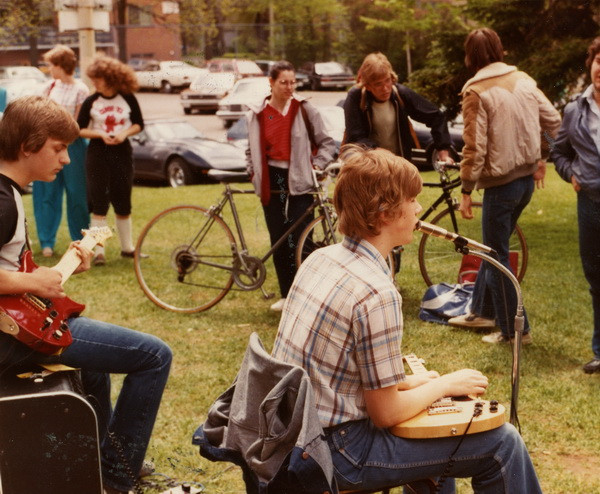 Jeff Healey Blue Direction early days with Squier Stratocaster
Jeff Healey Blue Direction early days with Squier Stratocaster
Quail recalls, “His second electric was a black Japanese ”SQ-series” Squier Strat, with the big, 1970’s style headstock and a maple fretboard; he and I each bought identical guitars the same week in late 1983.” This shared experience highlights the accessibility and appeal of Squier guitars even in the early 80s, when they were establishing themselves in the market.
Healey’s third electric, another Japanese Squier Contempora in red with humbucker pickups, further demonstrated his experimentation with the brand. While the whereabouts of this particular guitar remain unknown, it signifies his continued exploration of Squier’s offerings.
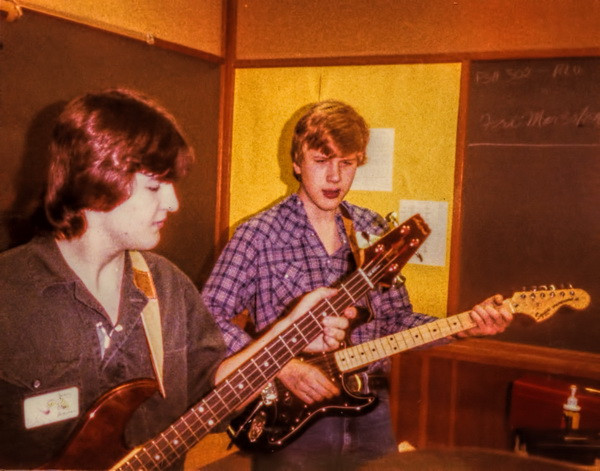 Jeff Healey Blue Direction era playing red guitar
Jeff Healey Blue Direction era playing red guitar
The Tobacco Burst JV Squier: A Workhorse is Born
The pivotal moment in Healey’s Squier guitar journey arrived around 1985 with the acquisition of a tobacco-burst MIJ (Made in Japan) Squier from Millwheel Guitars in Toronto. This particular guitar was a JV (Japanese Vintage) Squier, a model that would become his primary instrument for a significant portion of his career.
 Close up of Tobacco Burst Squier Guitar
Close up of Tobacco Burst Squier Guitar
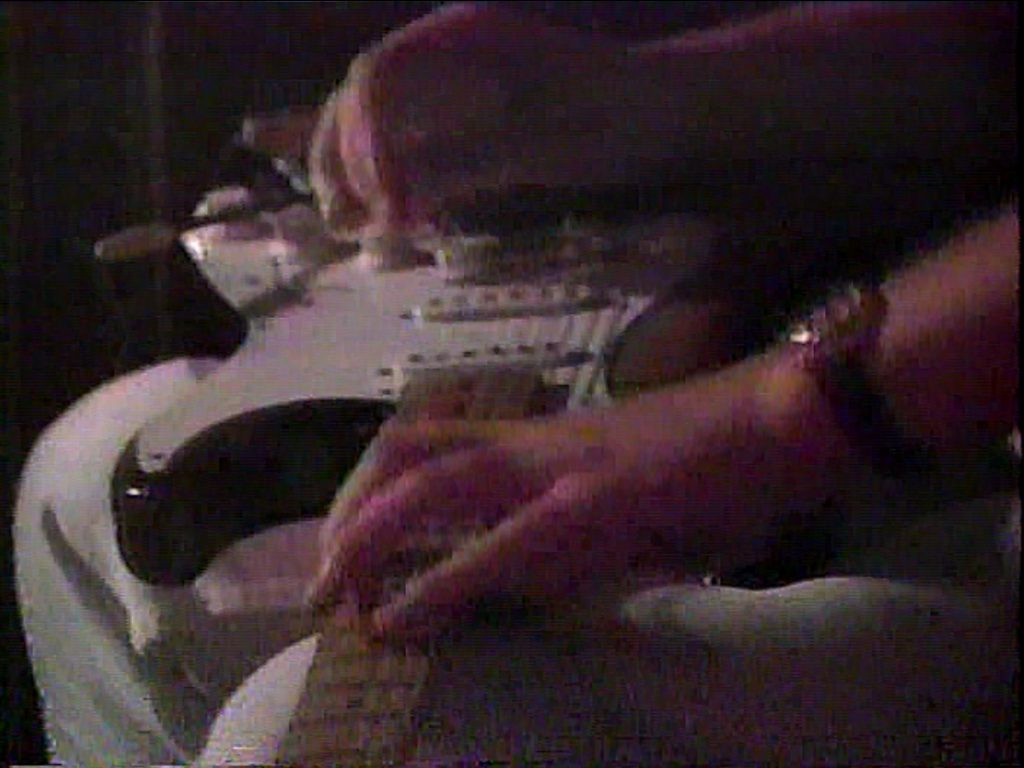 Jeff Healey Tobacco Burst Squier Guitar full view
Jeff Healey Tobacco Burst Squier Guitar full view
Quail emphasizes the significance of this model: “That was his first Japanese JV Squier, which is the type and model he used for much of his career.” These early Japanese Squiers, produced during a period when Fender was seeking to regain market share from Japanese manufacturers, were known for their exceptional quality and craftsmanship.
Black JV Squiers and Evans Pickups: The Signature Sound Takes Shape
During the peak of the Jeff Healey Band’s commercial success, particularly for their initial records and the movie “Road House,” Healey primarily utilized black JV Squier guitars equipped with red single-coil Evans pickups. These guitars, constructed with solid alder bodies, were the foundation of his signature Stratocaster sound.
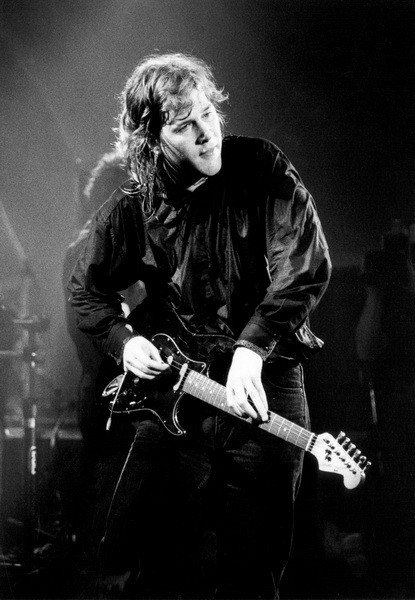 Jeff Healey Live in Germany with black Squier
Jeff Healey Live in Germany with black Squier
Healey himself lauded the Evans pickups, made by Rod Evans in British Columbia, stating, “His single-coil pickups to me, are the perfect combination of the standard single-coils and the humbuckers. I love them. They sound wonderful.” These pickups, later known as Evans Eliminators, were designed to be “fat” sounding with enhanced midrange and output, while minimizing noise and hum, crucial for Healey’s high-gain, high-volume stage setup.
William Furlong, a fan and guitarist, notes the robust construction of these pickups: “The pickup wires went straight into the epoxy on the back, so Jeff could stand on his guitars and the pickups wouldn’t come out of their clips…” This detail highlights the practical considerations for Healey’s energetic stage performances.
Quail further elaborates on the Evans Eliminators’ impact: “I played Jeff’s guitars quite a few times through that period… and I can say the Evans Eliminators he was using were “fat” sounding pickups with a lot of midrange and output… Regular Strat pickups would have been unusable through his rig.”
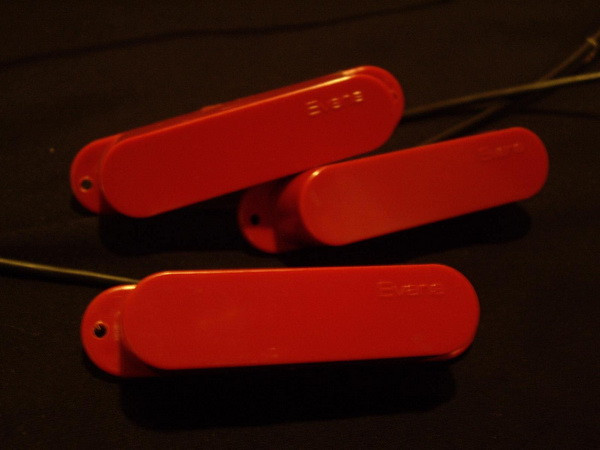 Evans Eliminator Pickups close up
Evans Eliminator Pickups close up
The Demise of the Black Squier Icon and the Signature Model That Wasn’t
The black Squier Stratocaster became synonymous with Jeff Healey’s image and sound. However, its fate was sealed by his energetic stage presence. As Quail recounts, “That black Squier Strat that most people associate with Jeff… is gone. As a part of his show he used to toss it around and jump on it and stuff. The body got re-glued back together so many times that it finally got scrapped.”
Despite the black Squier’s demise, its significance led Fender to approach Healey about a signature model. Prototypes were created, replicating the black Squier and featuring Lace Sensor pickups and Squier logos. However, Healey was not satisfied with these prototypes and ultimately passed on the signature model, giving them to fellow guitarist Pat Rush. This decision underscores Healey’s discerning ear and commitment to specific sonic qualities, even when presented with a signature deal.
Beyond the Strat: Exploring Healey’s Wider Guitar Preferences
While the Squier Stratocaster dominated Healey’s electric guitar landscape, he did venture into other territories, albeit with a similar focus on functionality and tone over prestige.
The Jackson Doubleneck: A Unique Stage Statement
For a period, Healey incorporated a custom Jackson doubleneck guitar into his stage performances. This “Siamese” doubleneck, featuring a 12-string neck above a 6-string neck, was a visually striking instrument.
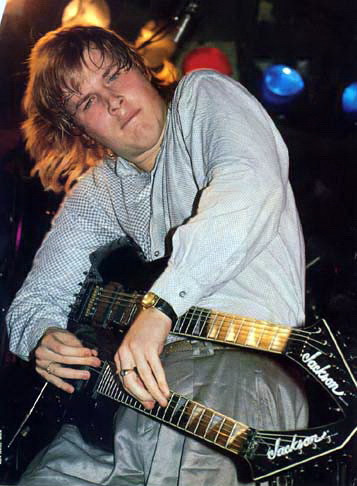 Jeff Healey with Jackson Doubleneck Guitar
Jeff Healey with Jackson Doubleneck Guitar
Healey acquired this guitar in Los Angeles during the recording of the “See The Light” album and “Road House” soundtrack. He praised its 12-string neck, stating, “It’s a beautiful thing and it has the best 12-string neck on it that I’ve ever experienced on any guitar.”
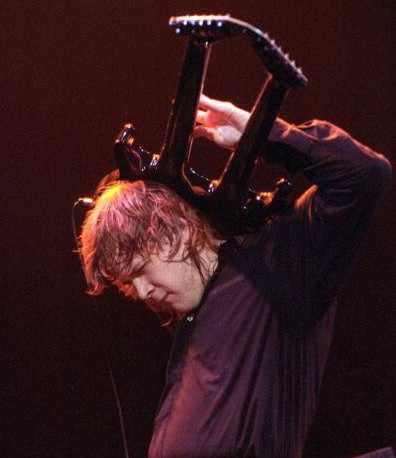 Jeff Healey Jackson Doubleneck close up stage
Jeff Healey Jackson Doubleneck close up stage
The Jackson doubleneck featured Seymour Duncan SH-5 humbucker pickups on the 6-string side and a combination of Evans single-coils and an SH-5 humbucker on the 12-string side, reflecting Healey’s consistent pickup preferences. Despite its complexity and weight, Healey utilized it effectively, especially before adding a second guitarist to his touring band. He later gifted this unique instrument to Rob Quail.
 Jackson Doubleneck being setup
Jackson Doubleneck being setup
Later Squiers and the “Dream Guitar” Concept
In the later part of his career, around 1999, Healey transitioned to custom-shop-built Squier guitars with Contempora bodies and a unique pickup configuration: three humbucking Evans pickups (later Seymour Duncan SH-5s) with complex wiring. This wiring allowed for individual coil-tapping of each pickup and various pickup combinations, including neck+bridge and all three pickups simultaneously. It also incorporated a “brightness roll-off” control designed by Pat Rush.
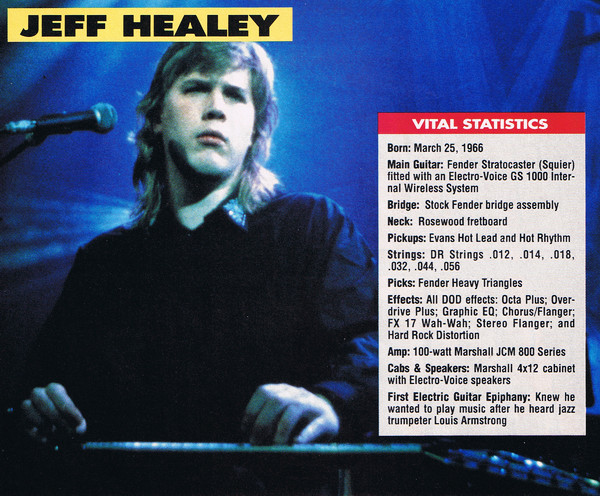 Jeff Healey Guitar School Magazine 1990s
Jeff Healey Guitar School Magazine 1990s
This “dream guitar” concept, as described by Healey and Quail, was envisioned as a highly versatile instrument. Healey even presented a schematic to Fender, hoping for a signature model. However, Fender deemed the design too complex and commercially unviable for a Squier-branded instrument, shelving the idea. Despite Fender’s reservations, Healey believed in the commercial potential of such a flexible guitar.
For his final album, “Mess of Blues,” Healey utilized a US-made Stratocaster with the same three SH-5 pickup and wiring configuration, further refining his preferred setup. Notably, this Stratocaster featured a recessed pickguard, a modification requested by Healey to mimic the feel of the prototype Squiers and avoid pick obstruction.
Gibson L12 Archtop: Jazzing it Up
For his jazz performances, Healey opted for a vintage 1940s Gibson L12 archtop guitar. He added a pickup to this acoustic instrument, seeking “electrified” jazz tones. He typically paired it with a Fender Pro Junior amplifier, valuing its simplicity and basic controls. His seemingly casual treatment of this vintage Gibson, keeping it on his porch year-round, further reinforces his “tool” approach to guitars, prioritizing their function over collectibility.
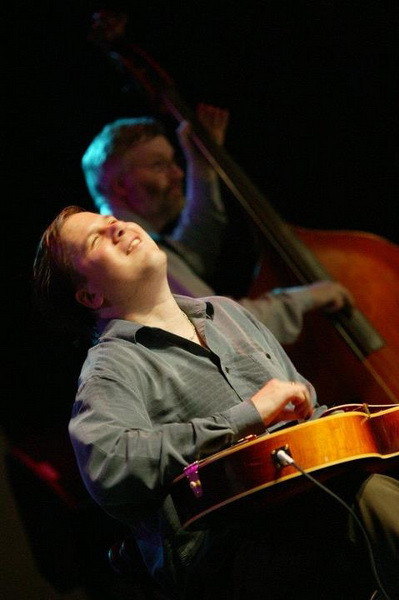 Jeff Healey Last Call Album Cover with Gibson L12
Jeff Healey Last Call Album Cover with Gibson L12
Picks, Amps, and Pedals: Completing the Healey Sound
Beyond guitars, Healey’s preferences extended to picks, amplifiers, and pedals, all contributing to his distinctive tone.
Signature Triangular Picks
Healey consistently used large, triangular Fender heavy gauge picks. He found these picks comfortable and well-suited to his picking technique, which involved hovering his picking hand over the strings. His preference for these larger picks dates back to his early teens, highlighting his early establishment of key elements of his playing style.
A close-up of Jeff Healey’s signature triangular guitar pick from the mid-1990s.
Amps: Marshall, Fender, and Loud Cleanliness
In his early days, Healey favored Marshall JCM800 half-stacks. Later, he transitioned to Fender ProTube Twins and, when touring, Fender ’65 reissue Twins. For his jazz performances, he used a Fender Pro Junior.
Healey preferred to set his amps for a loud, clean tone, deriving his distortion and overdrive from pedals. This approach allowed him to maintain clarity while achieving high gain levels and feedback control. His preference for the heavier Fender ProTube Twins over the ’65 reissues stemmed from their superior sound and robustness.
Pedals: DOD, Boss, and Sonic Mayhem
Healey endorsed DOD pedals early in his career, later switching to Boss pedals. His pedalboard typically included a Boss Blues Driver, Compressor, GE-7 Graphic EQ, Chorus Ensemble, and Digital Delay, along with a Vox wah pedal.
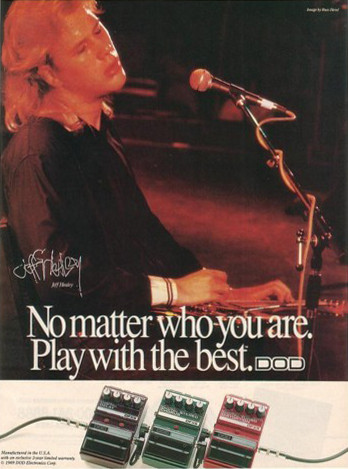 Jeff Healey DOD Pedal Ad 1989
Jeff Healey DOD Pedal Ad 1989
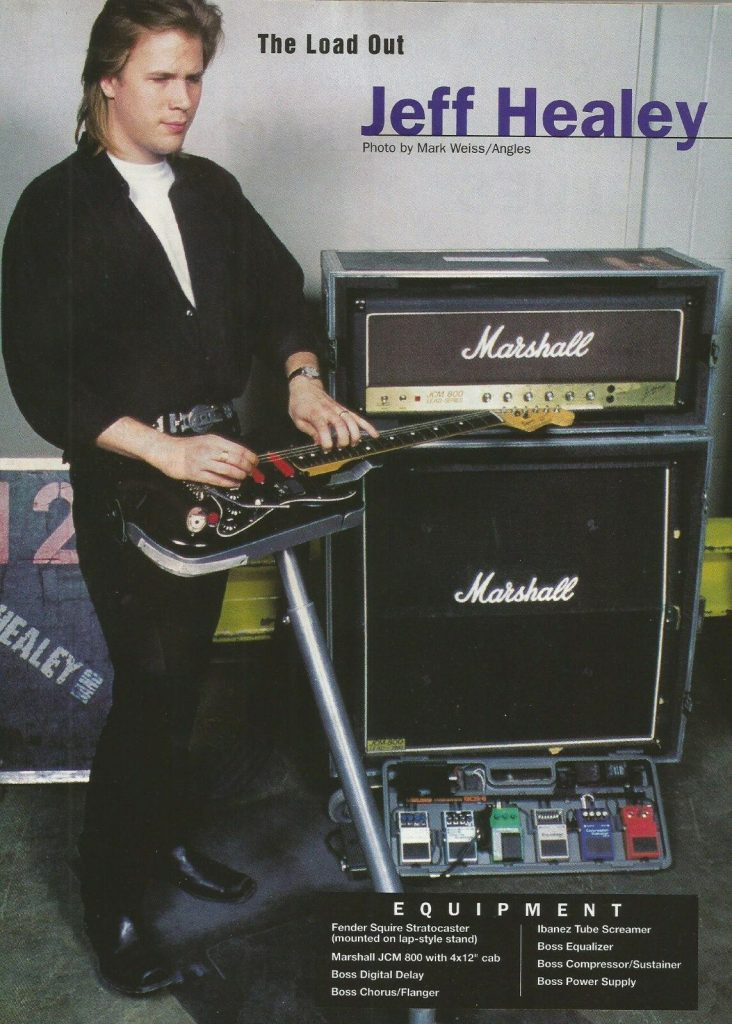 Jeff Healey Pedalboard 1990s
Jeff Healey Pedalboard 1990s
Dan Noordermeer describes Healey’s use of the Boss GE-7 EQ pedal: “Most people buy those pedals to sculpt their guitar’s tone… Not Jeff. He kept all the sliders in the middle… except the “gain” one… which he put all the way up. So basically, he used his EQ pedal as a “make it louder” pedal.” Similarly, his Boss Compressor was used not for subtle dynamics control but to push his amp into sonic chaos.
This unconventional approach to pedals, combined with his loud, clean amp settings, allowed Healey to sculpt his feedback-laden, expressive blues-rock tone. His setup was designed for interaction and dynamic control, treating the guitar, pedals, and amp as a unified instrument.
Conclusion: The Enduring Legacy of Squier and Jeff Healey’s Tone
Jeff Healey’s career stands as a testament to his exceptional talent and unique approach to guitar playing. His choice to frequently utilize Squier guitars, particularly the early Japanese models, challenges preconceived notions about gear and tone. He proved that a skilled musician could extract world-class sounds from instruments often considered entry-level.
Healey’s Squier guitar journey is not just a gear story; it’s a reminder that tone is fundamentally in the player’s hands. While he may have claimed not to be a “gear man,” his deliberate choices, from Squier Stratocasters to Evans pickups and his carefully curated pedalboard, reveal a deep understanding of his sonic needs and a commitment to achieving his distinctive voice. Jeff Healey’s legacy continues to inspire guitarists, proving that passion, skill, and a good Squier guitar can be a powerful combination.

